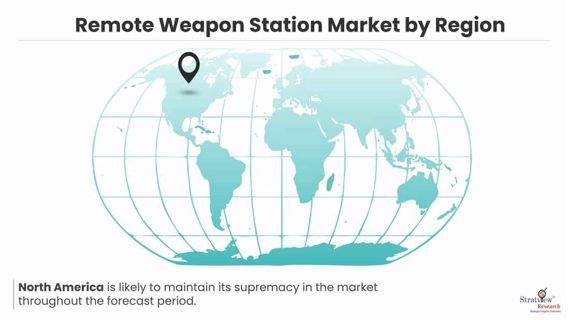"Remote Weapon Stations and Unmanned Platforms: A Synergy of Emerging Opportunities"

The Remote Weapon Station (RWS) market is experiencing a wave of emerging opportunities, driven by evolving military needs, technological advancements, and changing security dynamics. These opportunities hold the potential to reshape the market and offer new avenues for growth and innovation.
One of the most significant emerging opportunities in the RWS market is the increasing demand for unmanned ground and aerial vehicles (UGVs and UAVs). As modern warfare evolves, there is a growing need for RWS systems that can be integrated with these unmanned platforms. UGVs and UAVs equipped with remote weapon stations can perform various critical tasks, such as reconnaissance, surveillance, and target engagement, without putting human operators at risk. This trend not only enhances the effectiveness of military operations but also opens up new possibilities for RWS manufacturers to cater to this expanding niche.
Cybersecurity and data protection are becoming paramount in the RWS market. As remote weapon stations become more connected and reliant on advanced electronics and communication networks, they become susceptible to cyber threats. This emerging opportunity calls for the development of robust cybersecurity solutions that protect RWS systems from hacking and unauthorized access. Companies that can provide secure, resilient RWS solutions are likely to find a growing market for their products.
The commercialization of RWS technology is another exciting opportunity. While traditionally used in military and security applications, there is a growing interest in adapting RWS for commercial purposes. RWS systems can be employed in border surveillance, asset protection, and even wildlife conservation. Their ability to remotely monitor and engage targets is of interest to various sectors beyond defense. Exploring these non-military applications can open up new markets for RWS manufacturers.
Environmental sustainability and energy efficiency are also emerging as important considerations in the RWS market. Manufacturers are increasingly focusing on designing RWS systems that consume less power and have a reduced environmental footprint. As governments and organizations worldwide prioritize sustainability, eco-friendly RWS solutions have the potential to gain a competitive edge. The remote weapon station market was estimated at US$ 10.11 Billion in 2022 and is expected to grow at a CAGR of 10.43% during 2022-2028 to reach US$ 18.34 Billion in 2028.
Lastly, partnerships and collaborations are emerging as a way to tap into new opportunities. RWS manufacturers are forging partnerships with technology companies and research institutions to leverage their expertise in areas like artificial intelligence, autonomous systems, and materials science. Collaborations with these entities can lead to breakthroughs in RWS technology, enabling manufacturers to offer more advanced and competitive solutions.
In conclusion, the RWS market is experiencing a significant transformation, with emerging opportunities that go beyond traditional military applications. UGV and UAV integration, cybersecurity, commercialization, sustainability, and strategic collaborations are all avenues that RWS manufacturers should explore. By embracing these opportunities and staying at the forefront of innovation, companies can secure their position in this dynamic and rapidly evolving market.
Amayra Shahさんをフォローして最新の投稿をチェックしよう!
0 件のコメント
この投稿にコメントしよう!
この投稿にはまだコメントがありません。
ぜひあなたの声を聞かせてください。
